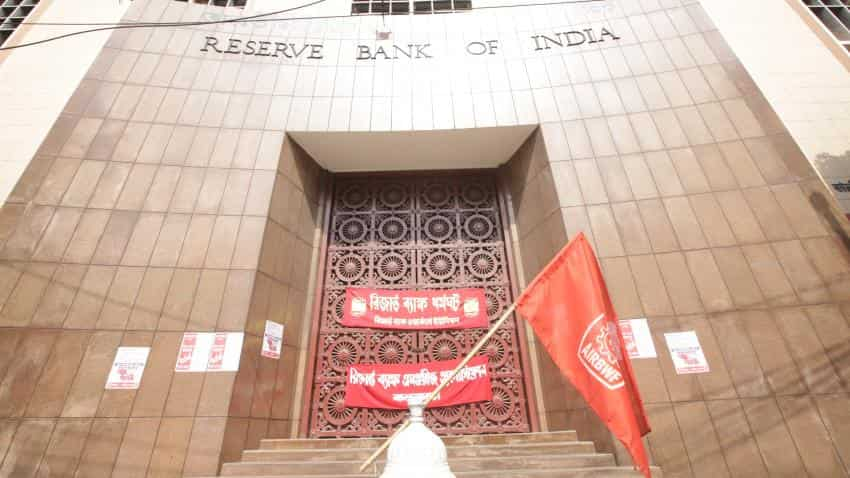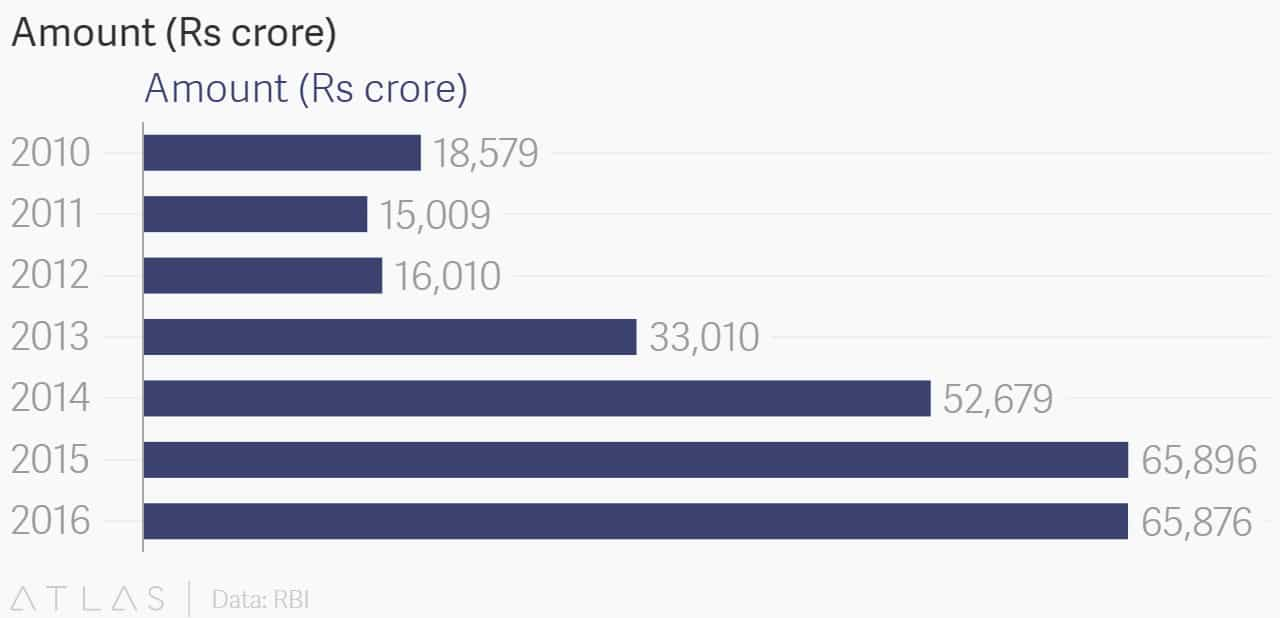RBI transferred most of its surplus to government last week
On August 11, the 559th meeting of the central bank was held, chaired by RBI Governor Raghuram Rajan.

Last week, the Reserve Bank of India (RBI) transferred nearly all of its surplus of Rs 65,876 crore to the central government.
The amount is Rs 20 crore lower than the amount transferred last year.
However, the surplus RBI transferring to the government has gone up substantially over the past few years (see chart). The central bank, in 2010, transferred Rs 18,579 crore which then declined in the following year to Rs 15,009 crore. In 2012, the amount transferred was Rs 16,010 crore.
The big shot was seen in 2013, when RBI gave Rs 33,010 crore, a jump of Rs 17,000 crore, or 60% rise, to the government. Then in 2014, the government received Rs 52,679 crore from the central bank and Rs 65,896 crore in 2015.

RBI follows the July-June accounting year.
On August 11, 2016, 559th meeting of the central bank was held, chaired by RBI Governor Raghuram Rajan, where the surplus transfer decision was taken.
"The Board reviewed the current economic situation, global and domestic challenges and policy responses and other specific areas in the working of the Reserve Bank. The Board also discussed the draft Annual Report of the Reserve Bank for the year 2015-16," RBI said in the filing.
What is the surplus? From where RBI gets money?
As the central bank is the lender of last resort, it maintains a contingency reserve to help banks. The reserve is set up to meet any unexpected situations like depreciation in the value of securities, foreign exchange rates.
According to the central bank, its balance sheet largely consists of activities undertaken in pursuance of its currency issue function as well as monetary and reserve management policy objectives.
The main source of income is through the interest earned on bond holdings via open market operations or purchase and sale of government securities.
Why is RBI transferring money to government?
Presently, the government's fiscal deficit is under pressure. The Finance Minister Arun Jaitley has set a target to reduce the fiscal deficit to 3.5% of GDP in this fiscal year, down from 3.9% in the previous fiscal, The Indian Express reported.
The central bank in 2014 had appointed a committee headed by YH Malegam to handle surplus transfer to government issues.
The committee submitted its recommendations saying that the as the contingency and asset development reserves are at adequate level, the RBI for the next three years should transfer entire surplus earned in the previous fiscal to the government, a Business Standard report said.
"After three years, once RBI balance sheet grows, again a part of the surplus could be allocated for the reserve funds", the report said.
This year, the government will face more pressure due to the implementation of 7th Pay Commission. The central government employees will get the revised pay from August.
Get Latest Business News, Stock Market Updates and Videos; Check your tax outgo through Income Tax Calculator and save money through our Personal Finance coverage. Check Business Breaking News Live on Zee Business Twitter and Facebook. Subscribe on YouTube.
RECOMMENDED STORIES

EPFO Pension Schemes: Early pension, retirement pension, nominee pension and 4 other pension schemes that every private sector employee should know

Tata Motors, Muthoot Finance and 3 more: Axis Direct recommends buying these stocks for 2 weeks; check targets, stop losses
04:12 PM IST











 Municipal corporations need to enhance own sources of revenue: RBI report
Municipal corporations need to enhance own sources of revenue: RBI report India at forefront of digital revolution, says RBI Dy Guv Patra
India at forefront of digital revolution, says RBI Dy Guv Patra RBI issues framework for reclassification of FPI to FDI
RBI issues framework for reclassification of FPI to FDI RBI unlikely to go for immediate rate cut, despite inflation likely to cool: Ind-Ra
RBI unlikely to go for immediate rate cut, despite inflation likely to cool: Ind-Ra RBI ups domestically-held gold by another 102 metric tonnes in April to September
RBI ups domestically-held gold by another 102 metric tonnes in April to September